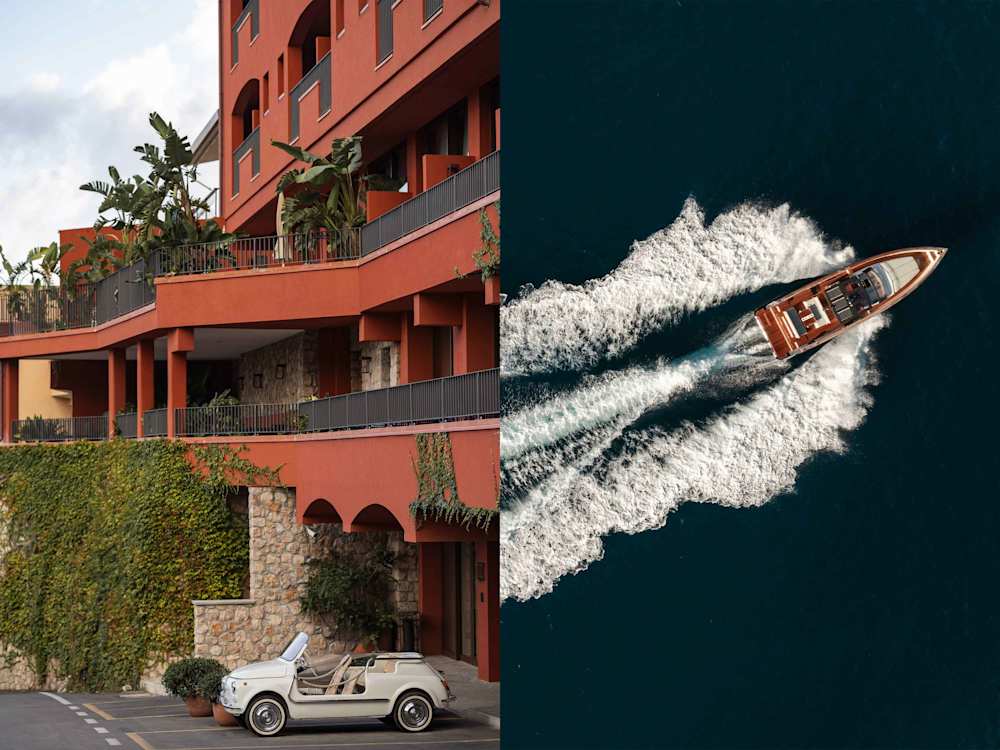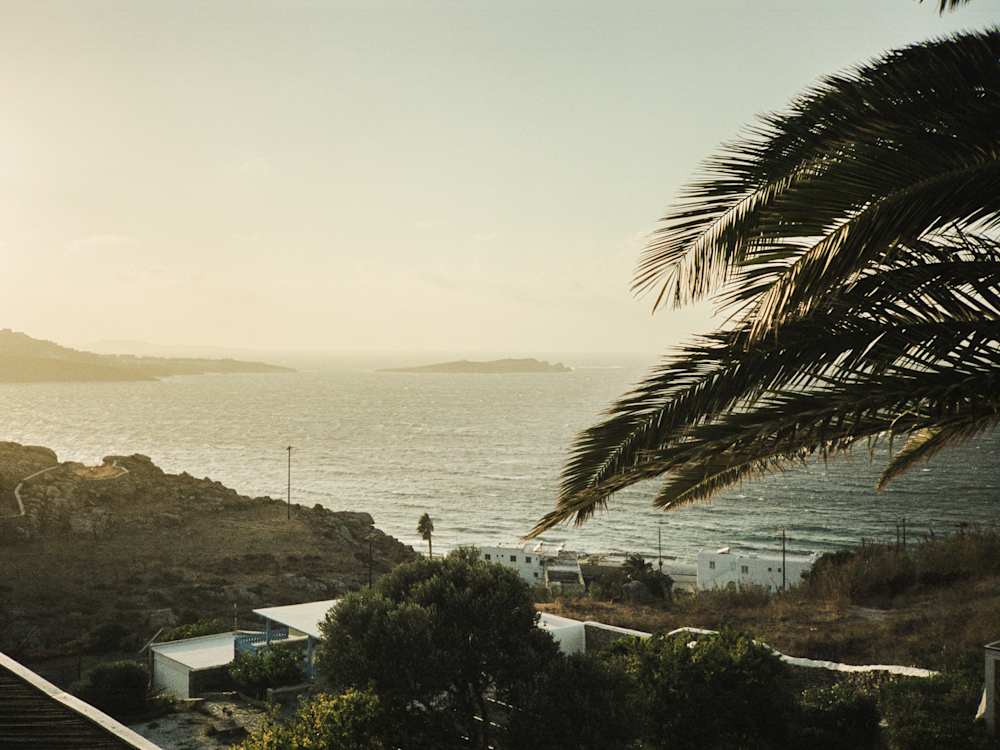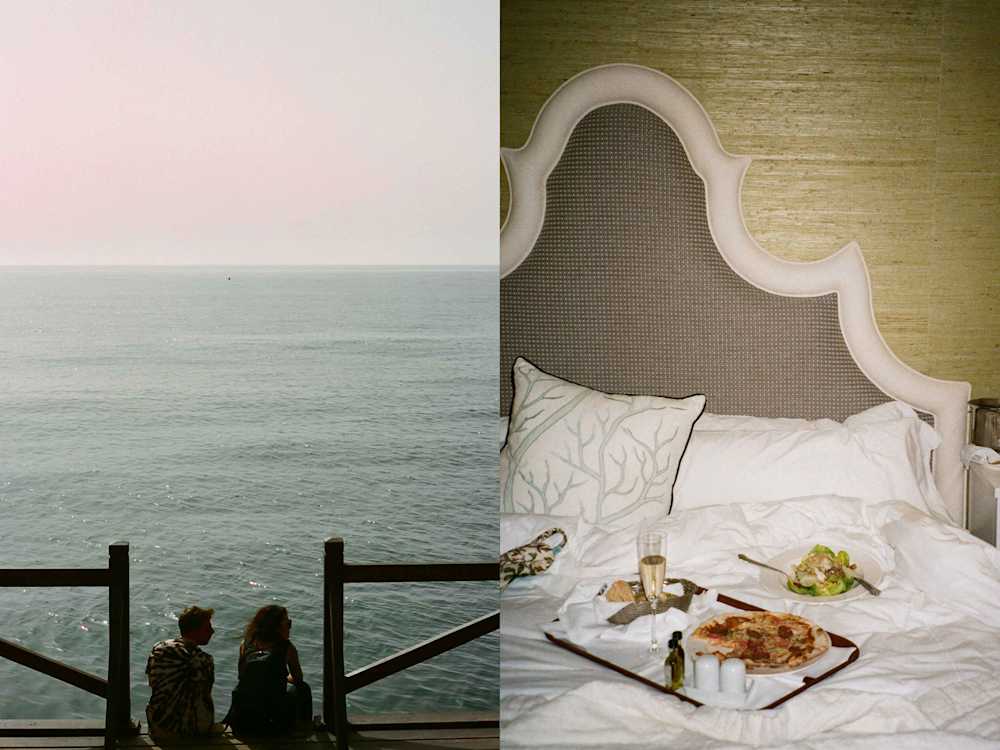It’s July and for many that means one thing: locating a beach in Europe. Antipodeans flee their winter for modern-day Grand Tours; Americans can’t get enough of the Continent’s long, languorous summers; and TikTokers take refuge everywhere from the Amalfi Coast to the Athenian Riviera.
For those of us fortunate to live within a two-hour flight, it’s time to get the straw hats and basket bags ready — even if we’re not in a position to set a six-week ‘Out of Office’ on like our Continental counterparts. Here’s the story of the great and glamorous holiday resorts of Europe…
Porto Ercole

It’s no secret that Italians do it better — in food, fashion and life generally. So, unsurprisingly, they excel at the art of the holiday resort, with a stylish shoreline often in close proximity for most denizens. Neapolitans have the Amalfi Coast at their fingertips; Venetians have their beloved Lido; and Porto Ercole is just about equidistant for Romans and Florentines fleeing their offices come high summer.
The latter, as with so many of Europe’s now-glitzy coastal enclaves, was originally a sleepy fishing village at the edge of the Tyrrhenian Sea on the Monte Argentario peninsula. It was first settled by the Etruscans, with a Spanish fortress built in the 16th century to protect the coast from pirates and Ottoman raiders — an asset now used to give tourists a spectacular view of the bay and village below. The artist Caravaggio died here in 1610, after being imprisoned while transporting a few masterpieces. A set of lagoon-forming isthmuses connect it to the mainland, and there’s a newer, buzzy part of the harbour complementing the historic hilltop area. Even more staggering beauty awaits at the Duna Feniglia Nature Reserve.
Where to stay The resort town’s most famous hotel, Il Pellicano, helped put it on the map in 1964, soon attracting a clientele of Hollywood stars, Euro royalty and Italian high society — new heights were reached when the discerning Sciò famiglia took the helm in 1979. Newer but still notable is La Roqqa, named for the town’s famous fortress. This is a hotel that’s all about the views: the rooms have balconies for admiring the namesake landmark and the beach club also overlooks Forte Stella. It’s within easy reach of the centre for sundown strolls around Porto Ercole’s Renaissance piazze and mediaeval alleys.
Porto Cervo
On Sardinia’s north-easterly shores — aptly named ‘Costa Smeralda’ for the dazzling colour of its emerald waters — Porto Cervo has been a beacon for super-yachts since 1962, when Prince Karim Aga Khan fell in love with it. Needing somewhere to moor his boat, his first priority was building a 700-berth port.
But unlike the less salubrious holiday hubs of Europe, high-rises were banned from the off — conservation was always key, with building heights not allowed to exceed any existing construction to this day. The effect is a sort of terracotta Disneyland that doesn’t quite seem real, especially at sunset when the sky starts to blush in shades of lilac, peach and pink. As with any self-respecting jet-set enclave, the shops are almost exclusively designer boutiques, and most HNW-frequented restaurant brands have a presence here, including Zuma, Matsuhisa, Nammos beach club and Novikov. Naturally, real estate is prime, with the average cost of a square metre being somewhere in the region of €20,000.
Where to stay Touch down at Olbia and 7Pines Resort Sardinia is a 45-minute drive away. First impressions are strong, thanks to an impeccably located reception at the highest point of the estate. There are lots of restaurants to tempt you in town, but don’t miss Michelin-starred Capogiro at the resort — where the bread course is a moment and takes over the entire table — and Cone Club down at the shore. From the hotel, it’s a 10-minute drive to the centre of Porto Cervo, on the other side of Baja Sardinia.
Mykonos

Long before it was appointed the Aegean’s most lively party island, Mykonos was a sleepy fishing community. The photographer Robert A McCabe, who captured the island’s former life in his book, Mykonos: Portrait of a Vanished Era, wrote of his first visit in 1955: ‘From the vantage point of those days on that magical quiet island with one 12-passenger bus and a plethora of donkeys, it was absolutely inconceivable what would happen over the ensuing 60 years. On the day I arrived there were some 15 visitors on the island.’ On any given high-summer day today, Mykonos receives visitors in the hundreds of thousands.
Instead of slow-paced fishing villages, you’ll now find outposts of international jet-set-approved establishments, including La Petite Maison and Beefbar (the latter in situ at Bill & Coo hotel); alongside unique restaurants like Noema, where the staff are dressed as Grecian goddesses and trendy monks, and a DJ spins tracks as you dine on delicious Greek food surrounded by stylish foliage.
Where to stay Of course, as the island’s popularity has grown so too has the amount of hotels, but one of the oldest is Mykonos Theoxenia, which was built by a postmodern architect in 1960 and has a name-droppy guestbook (Brigitte Bardot and Mick Jagger are signatories). The now-listed retreat is at the edge of town, which is particularly helpful if you’re one of the many coming here to party (and stumble home). For everyone else, there’s sunrise yoga and meditation, wholesome Mediterranean food and spa treatments inspired by Ancient Greece.
Athenian Riviera
Jackie O and Maria Callas are two names that recur when discussing the longstanding fabulousness of Europe in high summer, with many hotels singing from the rooftops about hosting them as former guests. Another of their smart stamping grounds was the Athenian Riviera, the coastal suburbs that form the furthest reaches of this great sprawling city. These include glamorous Glyfada, between the base of the Hymettus mountains and the edge of the Saronic Gulf, and Vouliagmeni, famous for its lake and luxe seafood restaurants.
The area became popular in the Fifties as a place for well-heeled Athenians to escape the city for some rest and relaxation, with hotels, restaurants and nightclubs springing up in the Sixties and beyond, and yet more development taking place ahead of the 2004 Olympics. I can attest it’s just as A-list-approved today — at breakfast at a hotel in Vouliagmeni earlier this year, I nearly choked on my croissant when I realised I was sitting next to Kylie Minogue.
Where to stay As the Asteria Hotel in the Sixties, what is now One&Only Aesthesis welcomed the usual jet-set suspects, Aristotle Onassis among them. The standalone bungalows sit right at the water’s edge (a planning permission modern hoteliers could only dream of), some with direct beach access. Additions ushered in by One&Only include a Guerlain spa and affluence-indicator restaurants such as Sumosan and Manko, the latter of which doubles as a scene-y day-to-nightclub.
Marbella

Another princely playground is Marbella, in Spain’s Costa del Sol, thought to have been inhabited as early as the 7th century BC. Over the years, it has been occupied by Romans, Moors and now Brits abroad, who can’t get enough of the city’s year-round sunshine, first-rate golf courses, bougie restaurants and glamorous marinas.
Its current incarnation as an upscale holiday hotspot is largely thanks to Prince Alfonso of Hohenlohe-Langenburg, who bought two estates here in the Forties. One of the family’s summer residences, an old finca surrounded by pine and fig trees, later became the iconic Marbella Club hotel, and helped transform the sleepy fishing village into what it is today. Aristocrats and movie stars have holidayed here for decades, with new heights reached in 1970, when the marina and entertainment enclave Puerto Banus was unveiled. Naturally, the guestlist for the grand opening was starry, with the King and Queen of Spain, Princess Grace of Monaco and the Aga Khan all in attendance, and a live soundtrack courtesy of Julio Iglesias, who later had a street in the resort named after him.
Where to stay Make like Audrey Hepburn, Grace Kelly, Brigitte Bardot, Elizabeth Taylor and Princess Diana and check in to the legendary Marbella Club, which has upheld its glitzy reputation for more than 70 years now. Equally fabulous is La Zambra, between Málaga and Marbella in the Mijas hills, which was known as Hotel Byblos when it opened in the Eighties.
Saint-Tropez
Immortalised by Brigitte Bardot in the 1956 film And God Created Woman and still frequented by super-yachts every year all these decades later, Saint-Tropez is what summers were made for. Until the early 20th century, it was a fishing village with a history as a military stronghold — the 17th-century Citadel of Saint-Tropez was built to protect the coast from Spanish attacks.
After the war, its famous light and general attractiveness encouraged artists to take up residence. Along with painters such as Henri Matisse and Paul Signac, it attracted filmmakers of the French New Wave, like Jean-Luc Godard, and musicians who were part of the Yé-yé movement. Apparently, Joan Collins keeps a table all summer at legendary restaurant Le Club 55, on the sand at Plage de Pampelonne. Next door, you can channel an early-Noughties Paris Hilton and wade in off your boat to Nikki Beach. It’s not hard to see why Brigitte herself still lives here.
And the glamour isn’t exclusive to Saint-Tropez — the entire French Riviera has its fair share of glitz, seen in Antibes and Cannes, all the way along the sparkling Cóte d’Azur to Saint-Jean-Cap-Ferrat and prosperous principality Monaco.
Where to stay In the heart of town, Hôtel La Ponche is the A-list accommodation of choice — its starring role as a backdrop in both And God Created Woman and La Piscine sealed its favour with France’s luminaries, from Roger Vadim to Romy Schneider, with Sartre and Picasso also known to have propped up the bar. Or head out into the scenic rural surroundings for a stay at spa-enhanced La Réserve Ramatuelle.
Find your dream summer-holiday destination, or discover a Turkish resort in the making



